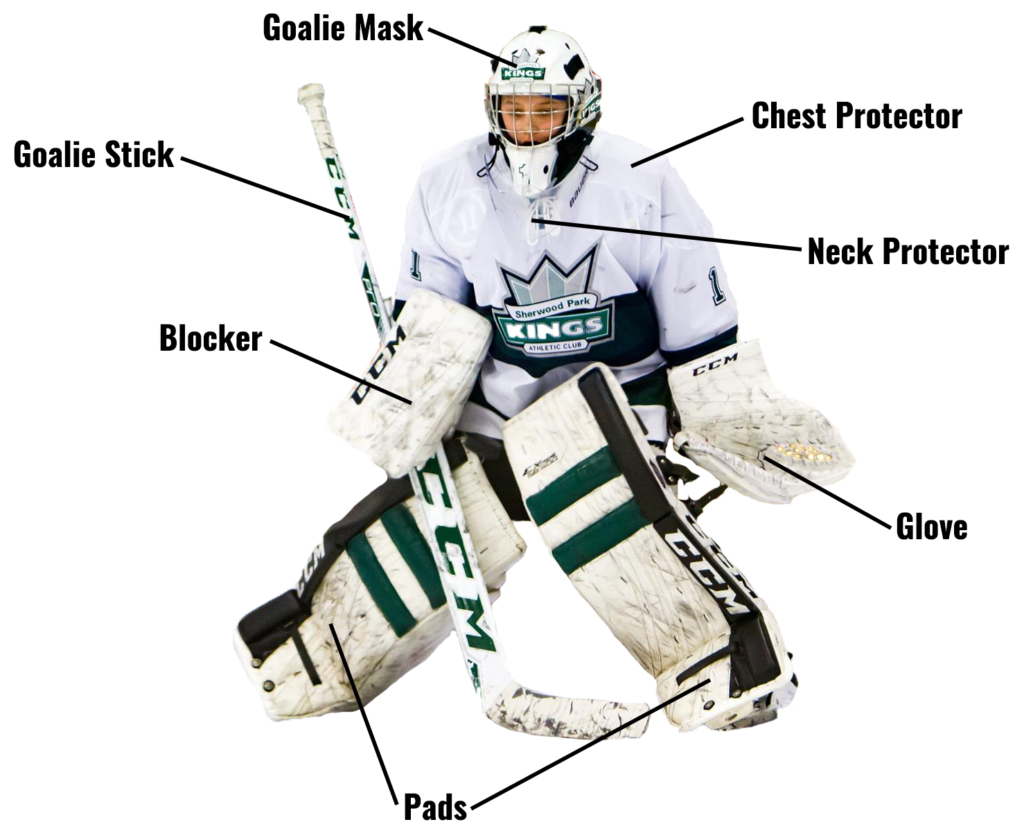Module 1: Intro to Ice Hockey
Welcome to your first step into the world of ice hockey! Whether you’re suiting up to play or simply tuning in for your first game, learning the fundamentals is where it all begins.
Ice hockey is a high-speed, high-intensity contact sport played on a large, enclosed sheet of ice called a rink — and that rink isn’t just a flat surface. The rink measure 200×85 feet. It’s a carefully designed playing field, divided into zones that determine a team’s every movement and strategy
Video clip showing players, rink layout, and positioning
Rink
Let’s break it down.
The rink is split into three distinct zones:
- The defensive zone, where your team protects its net, or the space in front of the net, called the crease.
- The neutral zone, which serves as the transition area between attacks and defenses,
- And the offensive zone, where scoring opportunities happen.
These zones are separated by two blue lines and a central red line, each serving specific gameplay rules, which you’ll learn more about in the next module. There are also 9 faceoff dots, 2 in each respective zone, and 5 in the neutral zone.
Rink Diagram: ConceptDraw
Rink Diagram: ConceptDraw
Positions
Each team places six players on the ice at a time:
- Three forwards: a center, left wing, and right wing — they focus on puck movement, passing, and attacking the opposing goal.
- Two defensemen, who guard their defensive zone, block shots, and support the goalie.
- One goaltender, or goalie, who acts as the last line of defense — tasked with stopping shots from going into the net and maintaining calm under pressure.
While each position has a clearly defined role, hockey is the ultimate team sport. Players constantly shift and adapt. For example, a defenseman might carry the puck through the neutral zone and set up a scoring chance, while a forward backchecks to help defend after a turnover. Great teams flow together, reading and reacting to any changes in gameplay.
Equipment
Now, let’s talk gear, because in a sport where pucks can travel over 90 miles per hour, protection is important.
Every skater wears a full set of equipment:
- Helmet
- Shoulder Pads
- Elbow Pads
- Gloves
- Neck Guard
- Jock
- Hockey Pants or Shells
- Shin Guards
- Hockey Socks
- Skates
- Hockey Stick
Goalies wear even more specialized gear:
- Leg Pads
- Blocker
- Catching Glove
- Chest and Arm Protector
- Goalie Mask
- Goalie Stick
Equipment Rules
Equipment rules are there to protect players and maintain fair play:
- If a player’s helmet comes off during play, they must exit the ice immediately — no exceptions.
- If a goalie’s helmet comes off, the game is stopped instantly for safety.
- If a player or goalie drops their stick, they can keep playing — but if the stick breaks, they must drop it immediately and either finish the shift without it or retrieve a new one from the bench.
Every piece of gear is carefully chosen, not just for safety, but also to maintain the balance of protection, mobility, and control. Without this gear, modern hockey wouldn’t be playable at the speed or physicality we see today.



